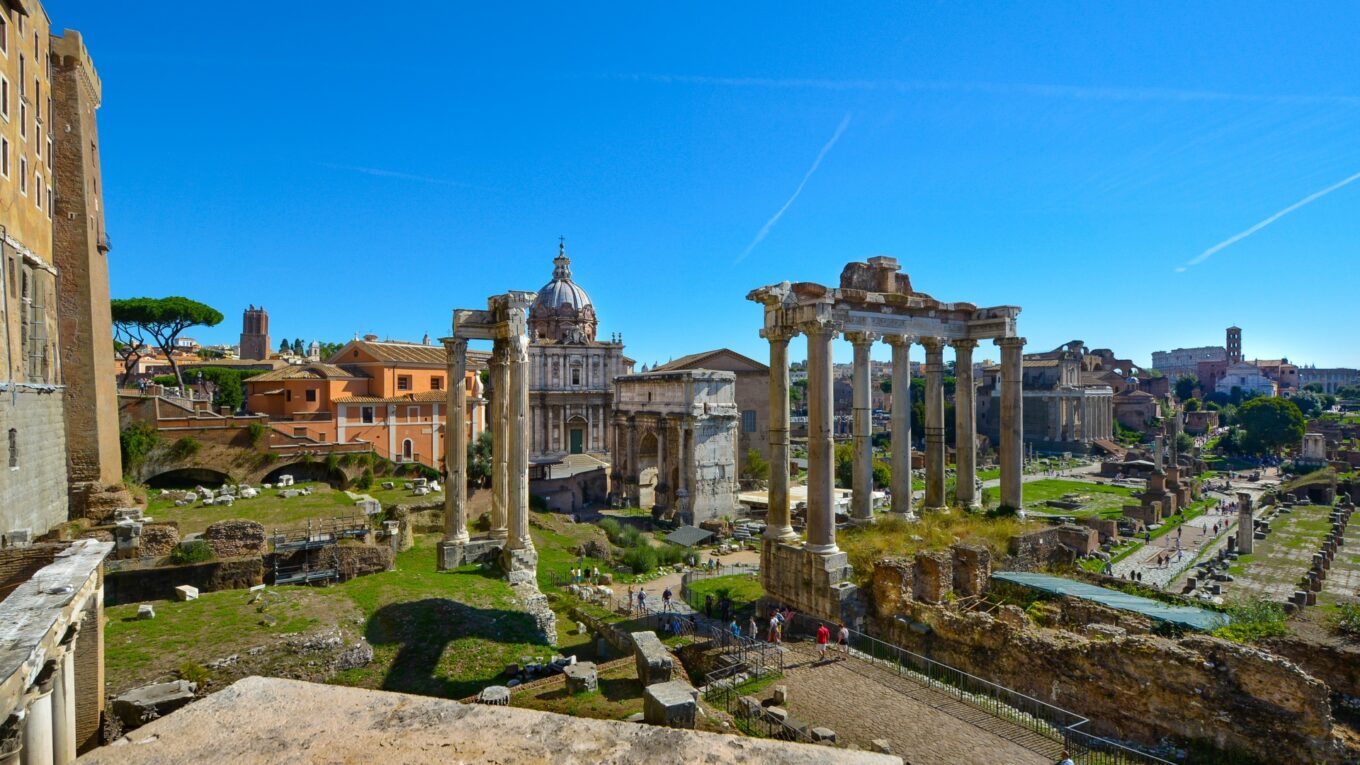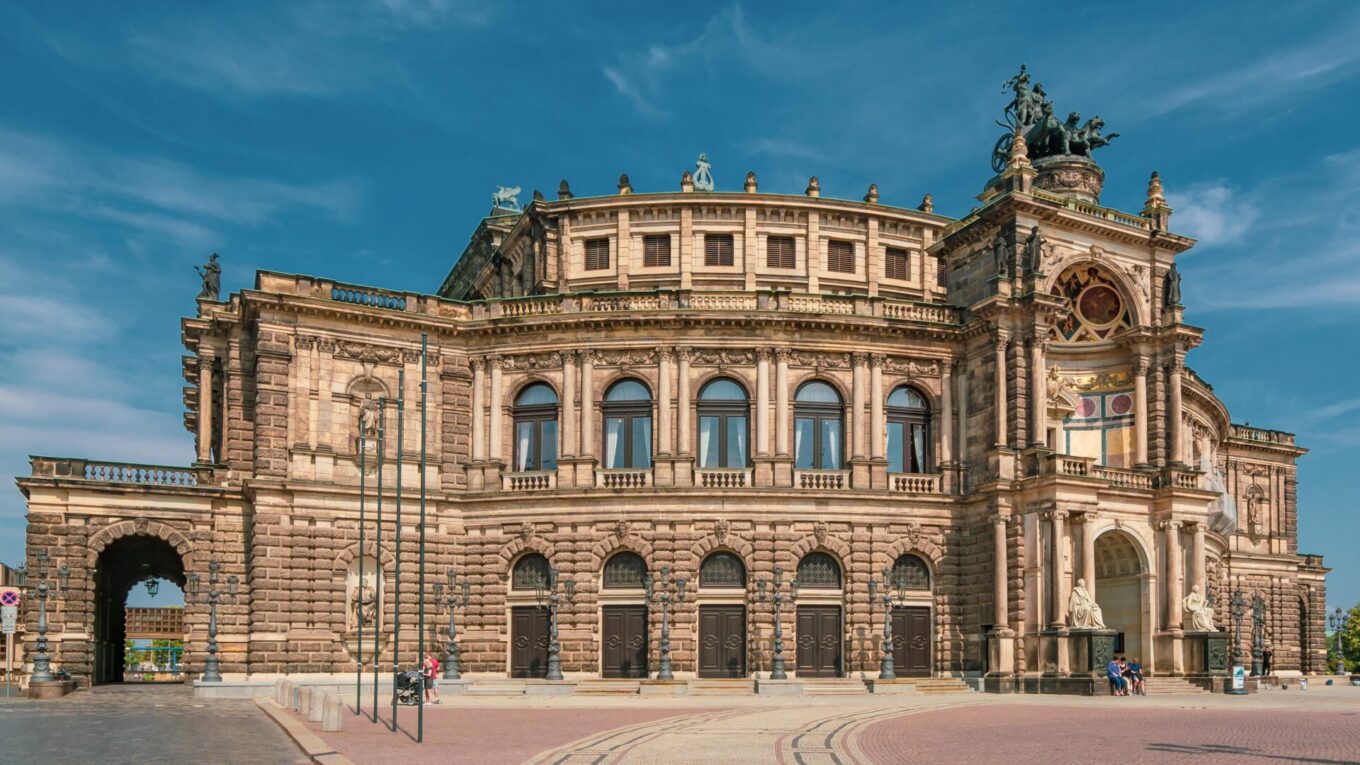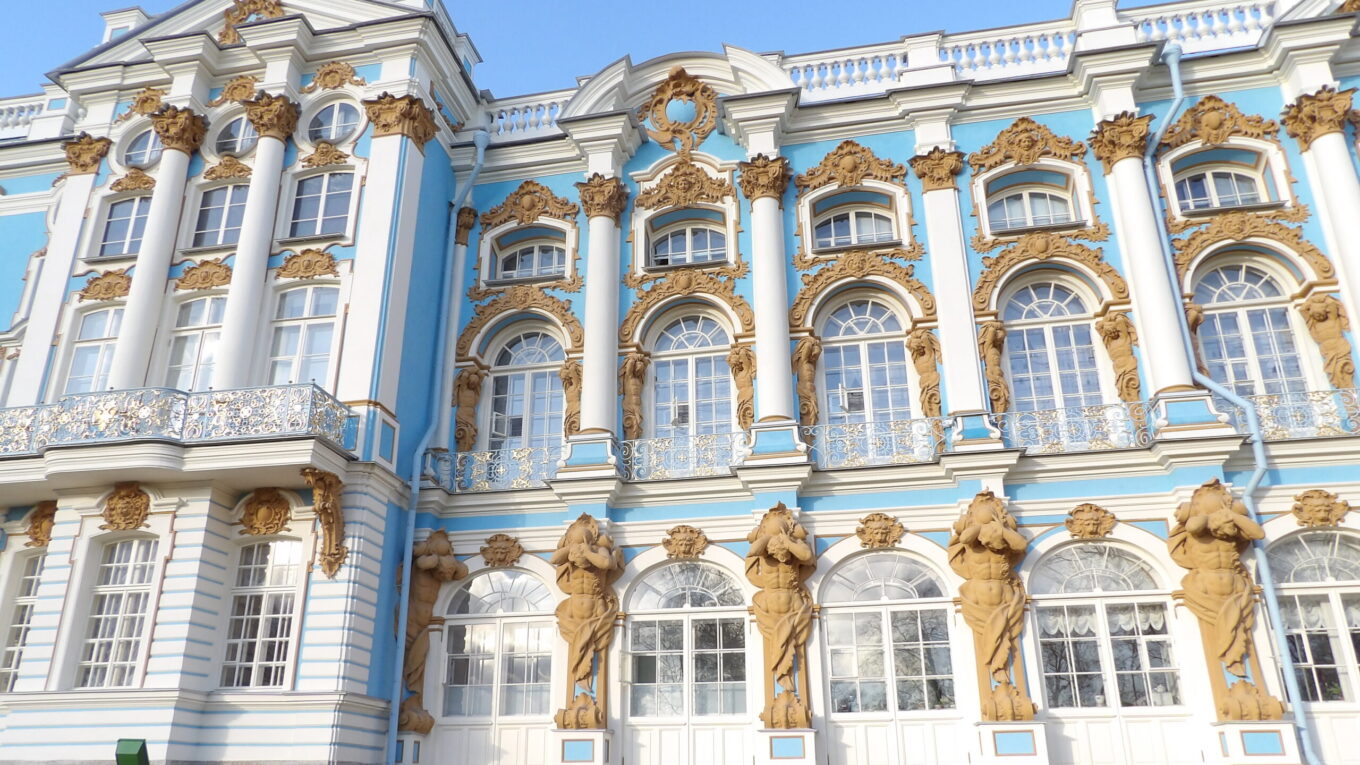Norman Architecture and the Top 15 Norman Buildings
The Normans were one of the leading cultures in Europe during the Middle Ages. Starting in the early 9th century, they took over large expanses of territory, including parts of Italy, Sicily, England, France, and even North Africa. Although not technically a distinct kingdom or empire, the various Norman Territories all shared a unique culture which is evident in the society’s buildings. Norman Architecture is an incredible sub-style within the overall Romanesque style of architecture. Unlike other Romanesque buildings, Norman Architecture contains elements of Latin-Christian, Byzantine, and Islamic Architecture.
Who were the Normans?
From their humble beginnings in Scandinavia, the Normans were a powerful group of people that came to be a dominant player in early medieval Europe. History shows us that the Normans were survivalists and opportunists. They originally began to settle in northern France, although the French saw it more as an invasion, with the Normans often pillaging towns in the countryside. As the Norman presence grew in the area, they became bolder, attacking Paris in 885 CE. The French monarchs grew tired of the conflict, and in exchange for loyalty, the Normans were granted a large portion of land in Northern France; today, the region is known as Normandy.

Image by Luvig14 from Wikimedia Commons
Brief History of the Normans
After migrating from northern Europe and creating a treaty with the King of France which formed the Duchy of Normandy, the Normans grew their fiefdom into a prosperous French Region. From there, different groups ventured to faraway lands with the hopes of finding riches and possibly expanding Norman Territory. They first entered parts of southern Italy, winning victories against the Byzantine Empire in the region of Apulia. They also fought against the Arab Emirate of Sicily, who had controlled the island for over two centuries. Eventually, after gaining control of all of Sicily and Southern Italy, the Normans formed the Kingdom of Sicily in 1130.
Meanwhile back in the Duchy of Normandy in France, the rulers were creating strong ties with both the French and the English Kings. When England’s King, Edward the Confessor, died in early 1066 he didn’t leave behind any sons to take over the throne. This led to a power struggle between several different factions. William I, Duke of Normandy believed he was the rightful heir to the English Crown. Harold Godwinson, a powerful English nobleman, assumed control of the kingdom immediately after the death of Edward the Confessor.
But even though another man claimed the throne of England, William I still raised an army and sailed across the English Channel to claim the title which he believed belonged to him. At the bloody Battle of Hastings on October 14th, 1066, the two rivals fought one another. King Harold was famously struck with an arrow through the eye, and his army quickly fell before the victorious Normans. An account of these events was forever documented in the Bayeax Tapestry, a 230-foot (70 m) long embroidered piece of cloth. To secure his newly conquered territory, William I constructed multiple forts and castles all throughout England. He was able to take control of the region and crush all resistance, creating a lasting dynasty of Norman Kings. For this, William I is forever remembered as William the Conqueror.
Although relatively unrelated, the Normans in England and in Italy continued to expand. In the north, the descendants of William the Conqueror went on to control large parts of Wales, Scotland, and Ireland. The Normans in Italy went on to take the Island of Malta, and although short-lived, they controlled a large amount of territory on the coast of North Africa. Norman soldiers would also compile a large portion of the crusader armies that conquered Jerusalem in 1099. This led to the foundation of the Principality of Antioch, one of the longest-lasting independent Crusader States.

Photo by Clemensfranz from Wikiemdia Commons
Norman Castles and Fortifications
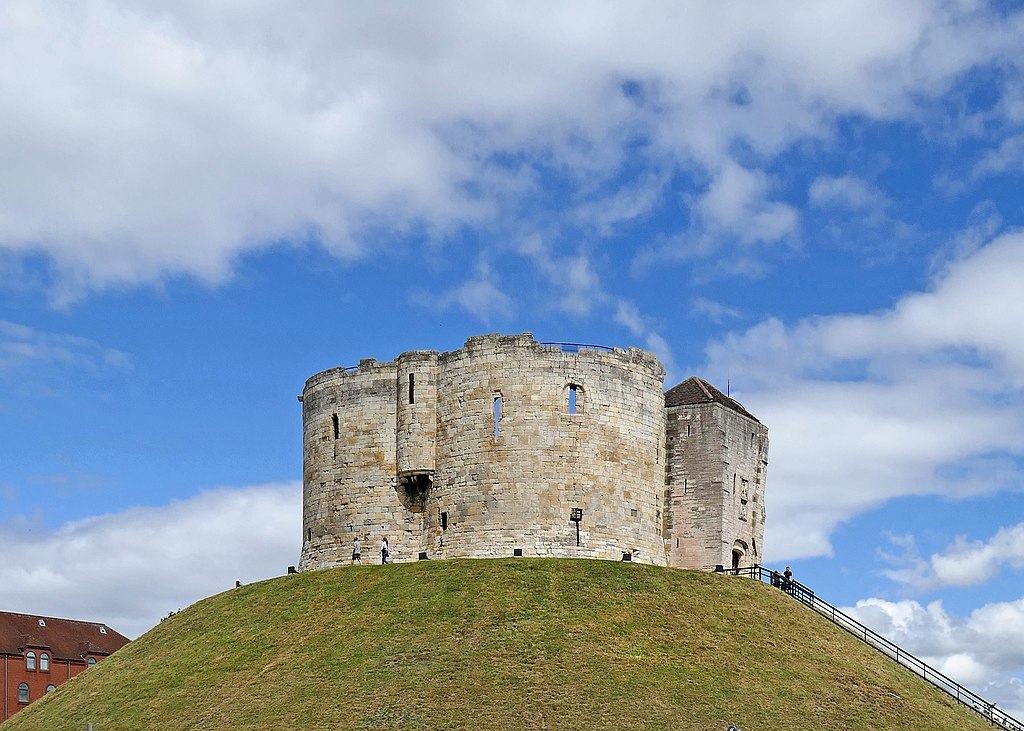
The Normans were fantastic military architects; various Norman Castles can be found throughout the British Isles and in other former Norman Lands. William the Conquerer was definitely the most active Norman Builder, he was able to control the massive population of England thanks to his network of castles and fortifications. His most notable building is the White Tower, located within the Tower of London. This massive stone fortress was integral to maintaining control over the bustling English capital.
Throughout the English Countryside, William built a series of Motte and Bailey’s to garrison troops and supplies. A design that had been around for centuries, the Motte and Bailey consists of a large earthen mound known as a Motte, which was topped with a defensive keep, known as a Bailey. Some of these were elaborate stone constructions, while others were simple, with wooden timbers encircling a protected space. Some of these fortifications were more evolved, making use of curtain walls that surrounded the central Motte and Bailey. Others utilized moats and drawbridges, eventually paving the way for the medieval castles that can be found all throughout Europe.
Characteristics and Features of Norman Architecture
Thick Walls & Small Windows
Photo by Pedrassani from Wikimedia Commons
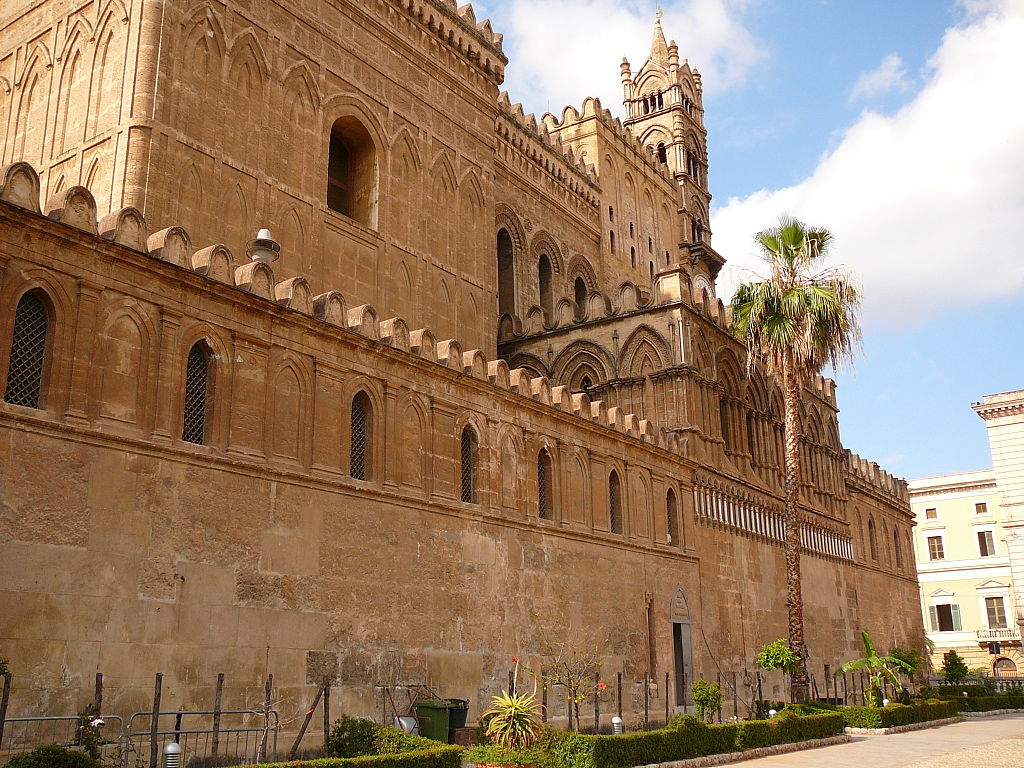
It’s important to remember that Norman Architecture, is just a sub-style within Romanesque Architecture. Because most Norman buildings date from the 11th and 12th centuries, they have a shorter, broader appearance, with thick walls and small windows. Many important innovations like flying buttresses were not yet invented. So Norman architects couldn’t create the light and airy walls with towering stained glass windows that were popularized in the Gothic Age. The Cathedral of Palermo is a great example of the Norman Style; the fortress-like exterior of the church is mostly masonry with small openings topped with Norman Arches.
Romanesque Detailing
Photo by Gary Campbell-Hall from flickr
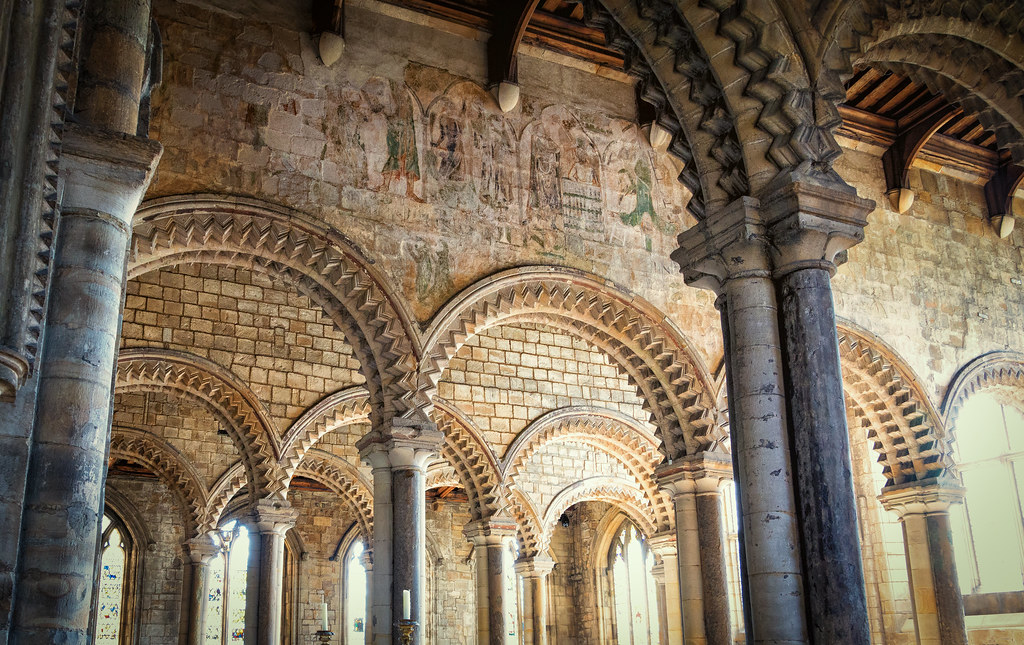
Although masons in the early Middle Ages were incredibly skilled, much of the sculptural stonework from this time period is simplistic when compared with the intricate carvings made during the Gothic Age. Romanesque detailing is usually geometric and often just complements the other geometry in the building around windows and doorways. Here at Durham Cathedral, you can see some fantastic Romanesque Detailing. The column capitals are simplistic, and geometric notching in the arches is about as intricate as it gets when looking at stonework from the early medieval period.
Norman Arches
Photo by Andrea Schaffer from Wikimedia Commons

Norman Arches are distinctly different than typical round arches. Round arches or “Roman Arches” were popularized by the Roman Empire and are a key element in Romanesque Architecture. Norman Arches, however, like these at the Cappella Palatina in Palermo, have a slight point to them. But it’s not a dramatic point, like on a Gothic Arch; It’s more of a curved point that gives the overall arch a semi-circular shape. Although a key feature, this element of Norman Architecture is only dominant in the Mediterranean portions of Norman Territory.
Mosaics
Photo by Andrea Schaffer from Wikimedia Commons
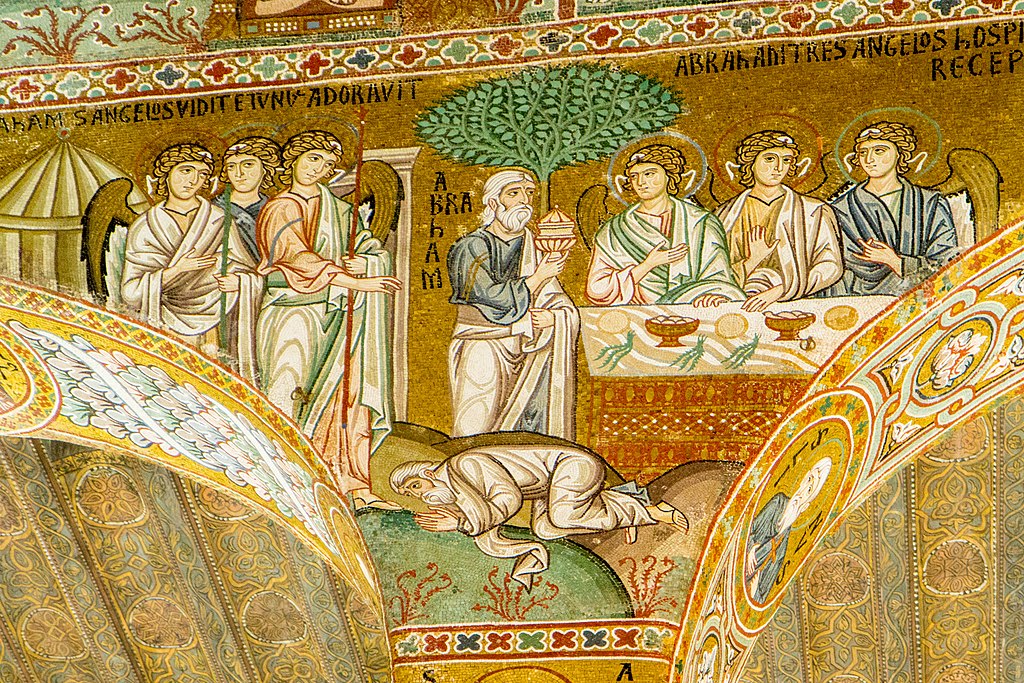
The Normans incorporated many elements from other regional forms of architecture during the early Middle Ages. Mosaics, a key feature in Byzantine Architecture, were utilized by the Normans to create elaborate images representing elements from the Bible, as well as depictions of many Norman Rulers. The Mosaics in the Cappella Palatina in Palermo are some of the finest examples of this art form found anywhere in Europe.
Where can I find Norman Architecture Today?
Because different groups of Normans conquered separate, isolated territories, Norman Architecture can be found in various pockets throughout Europe and the Mediterranean. This leads to one of the most interesting aspects of Norman Buildings, which is the various regional influences that make the style so unique. In the British Isles, Norman Architecture is heavily influenced by other Western European Romanesque Architecture, resembling other buildings in modern-day France, Spain, and Germany. In the Mediterranean, however, Norman Architecture takes on a whole new personality. Norman Buildings in the Mediterranean lands were heavily influenced by works of Byzantine and Islamic Architecture.
England, Scotland, & Wales
Photo by duncan from Wikimedia Commons

Norman Architecture can be found throughout Great Britain. Although mostly concentrated within England, a few examples can be found in Scotland and Wales too. Most of these buildings date from shortly after the Norman Conquest of England in 1066. The Tower of London is the finest example of Norman Defensive Architecture in Europe. Built by William the Conqueror in the early 1080s, it was one of the dozens of fortifications built by the Normans to secure their newly conquered lands.
Sicily & Southern Italy
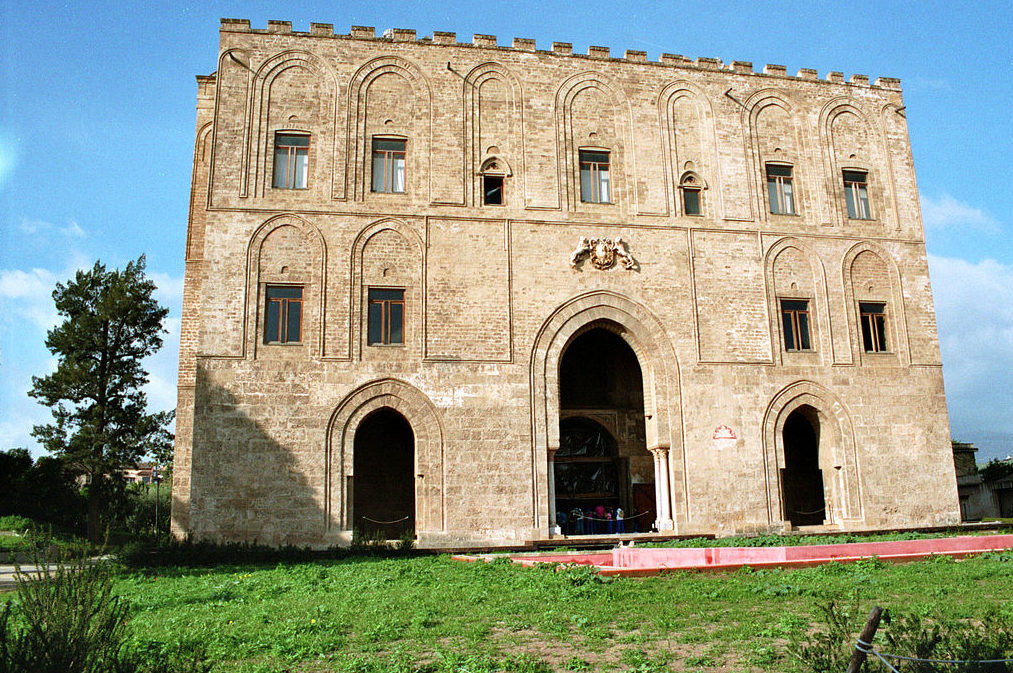
From 999-1139, different groups of Normans, often led by members of the ruling class, conquered all of Southern Italy and Sicily. Winning many victories against the Byzantines and the Emirate of Sicily they were able to create a kingdom that lasted for centuries. Particularly in Sicily, there are many impressive buildings, such as the Castle of Zisa in Palermo. All of the Norman sites in Palermo, including the Cathedrals of Monreale, Palermo, and Cefalù, are grouped together in one large UNESCO World Heritage Site.
Ireland
Photo by craigcallagher from flickr

After the Norman Conquest of England, the English Monarchs continued to expand outside of Great Britain. Although the original dynasty started by William I would only last until 1135, the future Anglo-Norman rulers of England would go on to invade Ireland in the late 12th century. They would control various parts of the island, leaving behind impressive fortifications, such as Carrickfergus Castle.
Malta
Photo by Mboesch from Wikimedia Commons

Back in Southern Italy, the Normans would continue to spread their domain into other parts of the Mediterranean. Located just 54 miles (88 km) south of Sicily, the Island of Malta was controlled by the Normans and was later incorporated into the Kingdom of Sicily. Although most Norman Architecture on the island wouldn’t last thanks to the region’s frequent earthquakes, a few palaces survive in the cities of Mdina and Vittoriosa.

Interested in Renaissance Architecture? Check out our article on the Architecture of Florence to learn more about the birth of the Renaissance Movement.
What are the best examples of Norman Architecture?
Below is a list of buildings that are often regarded as the best examples of Norman Architecture. These buildings show all of the key features of the Norman Style. This list will focus on size, innovation, and overall beauty to determine the best Norman buildings that can still be found in Europe today.
1. Cathedral of Monreale – Monreale, Sicily, Italy

Known for the opulent mosaics that decorate the church’s interior, the Cathedral of Monreale is one of the most incredible churches in all of Sicily. Construction began in 1172 and most of the architecture is Norman, although various additions were added in other styles. Much of the actual work was done by Byzantine craftsmen, who completed a lof the mosaics. The majority of the mosaic tiles are golden, which reflects the light and gives the interior a distinct yellow glow.

The cloister of the cathedral is one of the largest in Italy. It’s enclosed by a lengthy colonnade made with 216 Norman arches. The columns within the space are intricately carved; many are ornately sculpted and complete with gold and colored details. Located at the front of the church are two asymmetrical bell towers which were the tallest structures in Monreale for hundreds of years. Although the top of the north tower collapsed and was never rebuilt, the south tower next to the cloister is very well preserved.
2. Tower of London – London, England, United Kingdom

In the early 1080s, William the Conqueror built the White Tower, which today stands at the center of the Tower of London. The city’s most important medieval castle, the White Tower, was used by the first Norman Kings of England to control the population of the city. The White Tower was just a small part of a much larger fortification network built by the Normans. Even long after the throne was no longer held by the descendants of William the Conqueror, the Tower of London served as a key fortress within the English Capital.
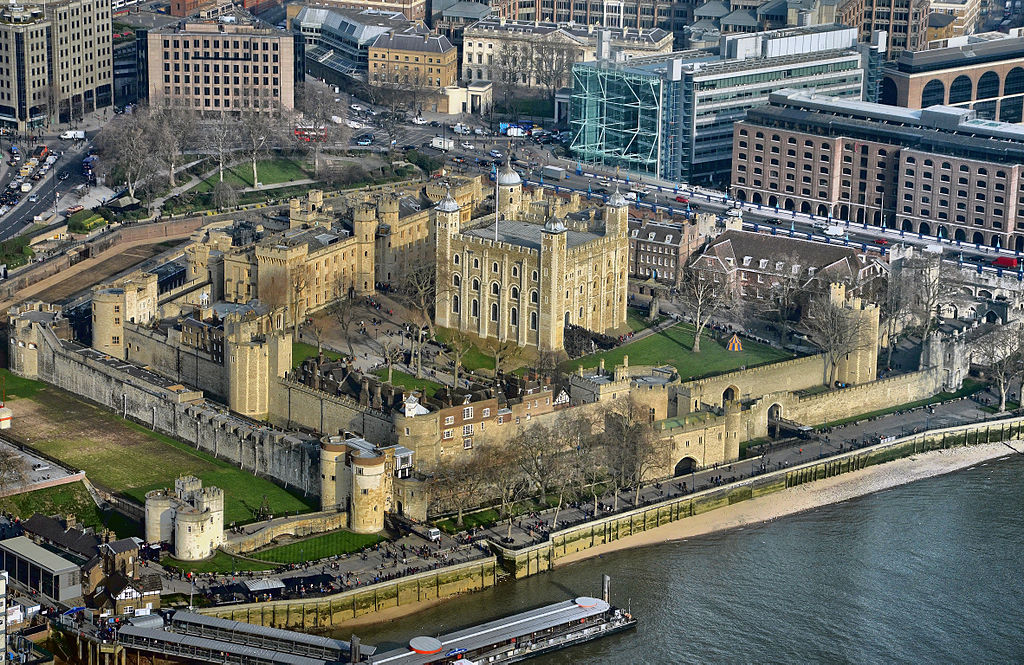
Over the centuries, the English added more fortifications, such as an outer defensive wall and a moat. Even as late as the 19th-century different buildings were still being added surrounding the original Norman building. The Tower of London also served various different purposes throughout history, being a defensive castle, a garrison for troops, a royal residence, and even a prison. Today, the Tower of London houses the English Crown Jewels and is one of the city’s biggest tourist attractions.
3. Palermo Cathedral – Palermo, Sicily, Italy

Palermo Cathedral is one of the largest churches ever built by the Normans. But, because the architecture of the church is very eclectic, it can be hard to identify the original Norman portions. The large portico at the main entrance dates to the Renaissance Period and the dome was added in the Neoclassical era. However, most of the exterior and the bell towers were built by the Normans.
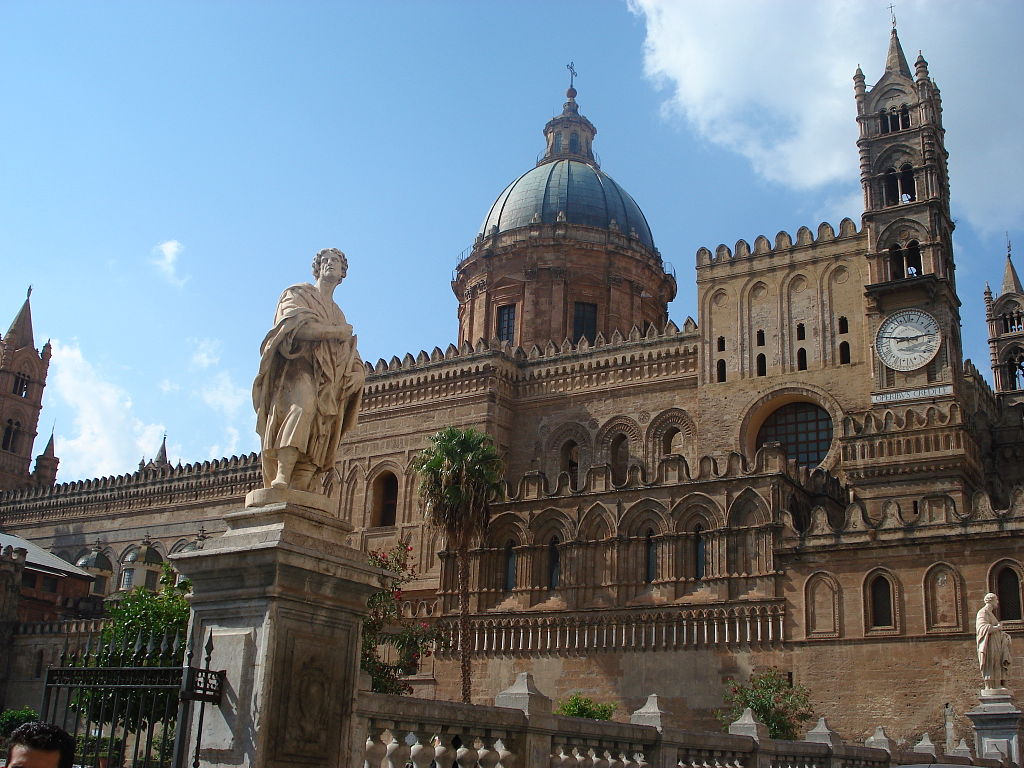
During the peak of the Kingdom of Sicily which was founded by the Norman Ruler Roger II in 1130 CE, Palermo was one of the most powerful cities in the Mediterranean. Thanks to Sicily’s central location, the kingdom was able to control much of the trade routes connecting mainland Europe with North Africa and the Middle East. Much of the wealth generated at this time went into creating Palermo’s many magnificent buildings.
4. Norman Palace of Palermo and Palatine Chapel – Palermo, Sicily, Italy

The Norman Palace of Palermo, known in Italian as Palazzo dei Normanni, is a large building complex located not far from Palermo Cathedral. The building served as the royal residence for the Norman Kings of Sicily, and today it houses the regional Sicilian Government. The palace was dramatically expanded over the centuries, and it even has a lot of modern renovations, which make it a comfortable working space for government officials.
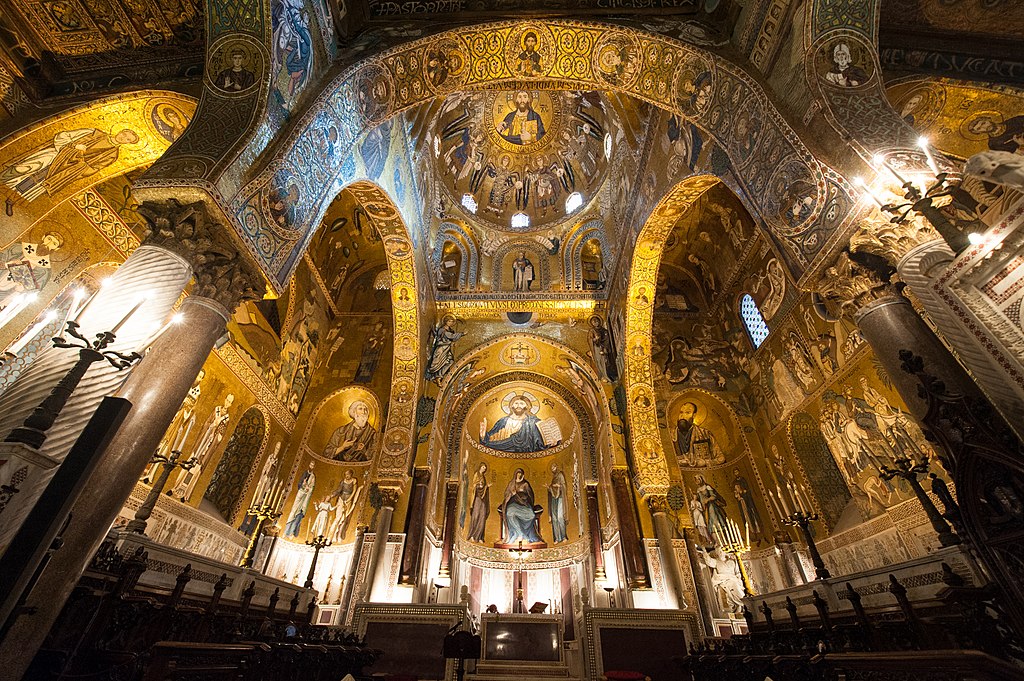
Like many other medieval royal residences, the Norman Palace of Palermo contains its own chapel, known as the Cappella Palatina. Roger II, who commissioned the building in 1132, made sure that this small chapel was richly decorated. Its lavish gold mosaics were meant to show off the wealth and power of his kingdom. Because its embedded within the Norman Palace of Palermo, the Palatine Chapel doesn’t really have any exterior facades, so its incredible interior is the focal point of the building.
Like Architecture of Cities? Sign up for our mailing list to get updates on our latest articles and other information related to Architectural History.
5. Rochester Castle – Rochester, Kent, England

Even though it’s just a shadow of its former self, Rochester Castle is still one of the most impressive works of Norman Architecture in the United Kingdom. The original Norman keep is the tallest structure within the castle, and it was completed in the 1100s, shortly after the conquest of England by William the Conquerer. The keep is really just a shell; however, all of the interior floors and rooms are long gone. Although various wars from English history left their mark on the castle, along with regular erosion, you can still get a sense of the scale of the original building.
6. Cefalù Cathedral – Cefalù, Sicily, Italy

Located just a short train ride away from the Sicilian capital of Palermo, Cefalù is a remarkably well-preserved seaside village on the Island’s northern coast. Besides the beaches, most visitors come to Cefalù for its Norman Cathedral. Work started on the structure in 1131, shortly after the Normans gained control of the region from the former Arab rulers. Although very similar in style to the Cathedral of Monreale, Cefalù’s cathedral isn’t as richly decorated, only containing a small mosaic at the apse of the church.
7. Durham Cathedral – Durham, County Durham, England

Several of England’s greatest cathedrals were begun by the Normans. Possibly the greatest example of this is Durham Cathedral in Durham, England. The lowest portions of the nave date to the time of the Normans. The first stones were laid in 1093, and work continued for centuries. Most of the church is Gothic and was built long after the time of the Normans. But the portions that were built in the early Middle Ages remain as some of the best-preserved works of Norman Architecture anywhere in England.
8. Carrickfergus Castle – Carrickfergus, Northern Ireland, United Kingdom

The descendants of the original Norman Kings of England went on to take a lot of territory within Ireland in the late 12th century. Just like when the Normans invaded England, they constructed numerous fortifications to help maintain order and control in their new territories. Carrickfergus Castle in Northern Ireland is one of the largest and best-preserved of these Norman Buildings. Located along the waters of the North Channel that separates Northern Ireland and Scotland, the castle was an important supply point between Norman settlements in Ireland and the island of Great Britain.
9. Southwell Minster – Southwell, Nottinghamshire, England
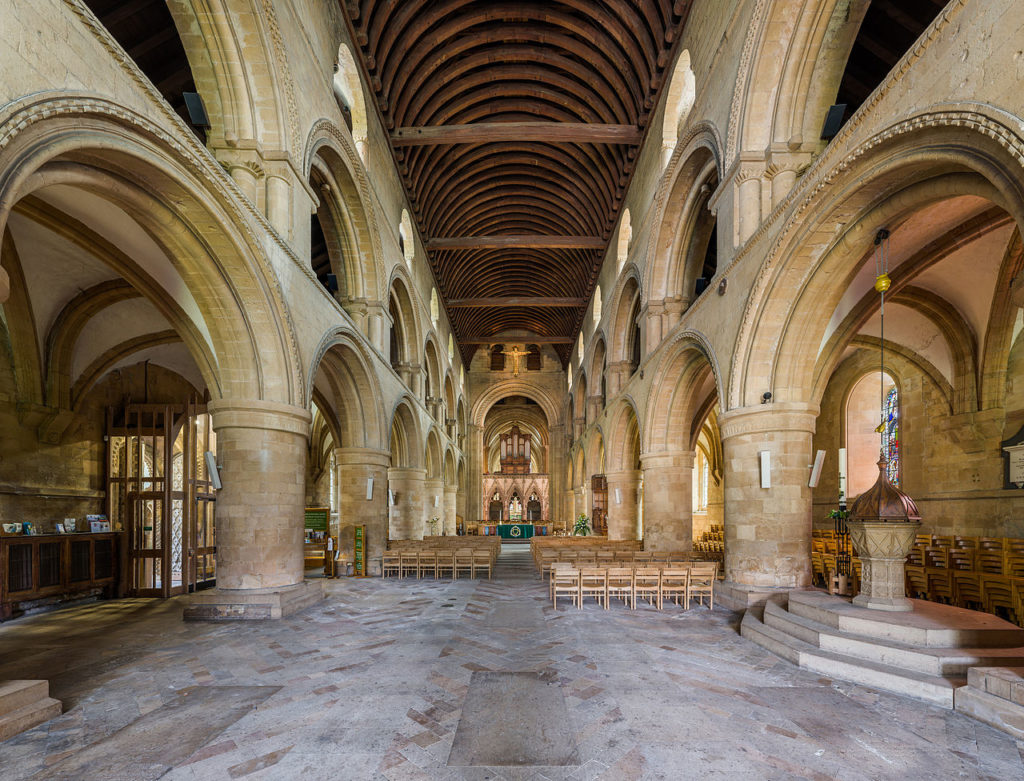
Just like Durham Cathedral, Southwell Minster is another large English church containing a portion dating to Norman times. Norman construction began on the church in 1108, but there had been a religious structure on the site since 627 CE. The western portion of the Nave is the part that dates from the Norman Era. You can tell because of the rounded arches which are distinctly different than the pointed Gothic arches that you see in the rest of the church. The church was eventually elevated to a Minster, a distinct title for an English religious building signifying the church’s importance.
10. Church of Santa Maria dell’Ammiraglio – Palermo, Sicily, Italy

Piazza Bellini is a square in the heart of Palermo that is famous for its two Norman Buildings. The Church of San Cataldo is the smaller of the two and has a very Arabic influence. It’s known for its three distinct red domes. The larger Church of Santa Maria dell’Ammiraglio has a Norman bell tower and some exquisite mosaics located inside. Although the front facade dates from the later Baroque Period, once you enter the Church of Santa Maria dell’Ammiraglio you’re surrounded by Byzantine-style mosaics that date from the 12th century.

After the fall of the Western Roman Empire in 476 CE, the Eastern Roman Empire lived on for centuries. Also known as the Byzantine Empire, it would last until the fall of Constantinople in 1453. Check out our article, “Top 25 Examples of Byzantine Architecture” to learn more!
11. Hedingham Castle – Castle Hedingham, Essex, England
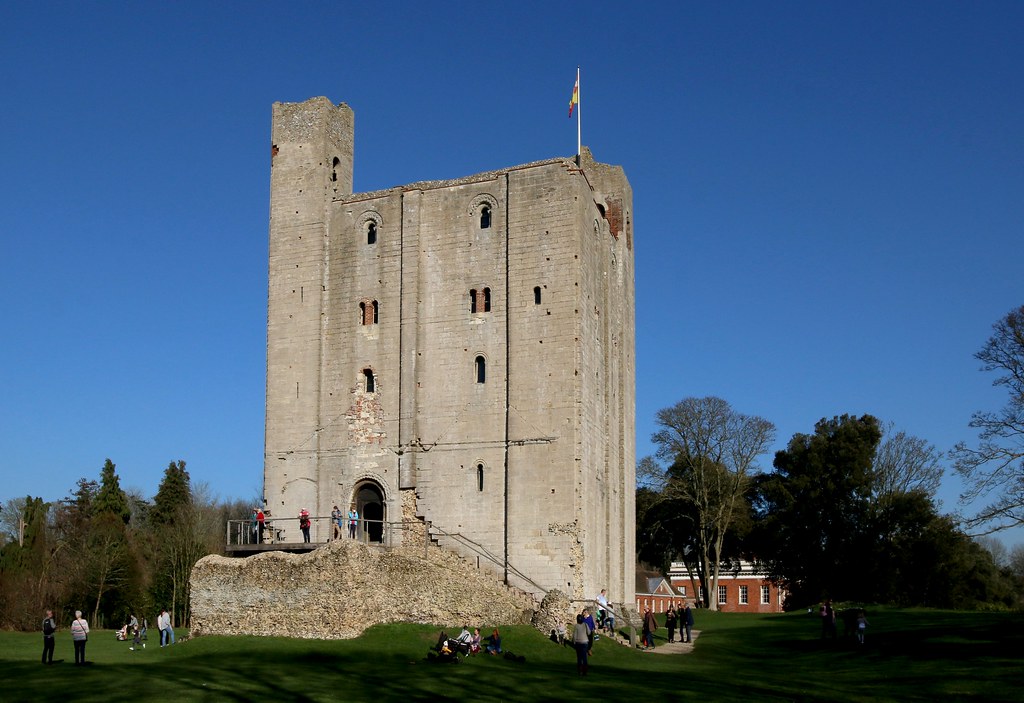
One of the best-preserved Norman Keeps in all of England, Hedingham Castle is another example of the massive fortification network constructed by William the Conqueror and his successors. The four-story tower has thick walls and tiny windows, which made it particularly strong when under siege. It was strategically placed a short march from the Norman Capital of London, which meant that soldiers could leave the capital and camp at the Hedingham Castle on their way to other parts of England. Although smaller than many of the other medieval castles in Europe, it’s still a formidable fortress that would have been nearly impregnable using standard medieval siege techniques.
12. Lincoln Castle – Lincoln, Lincolnshire, England
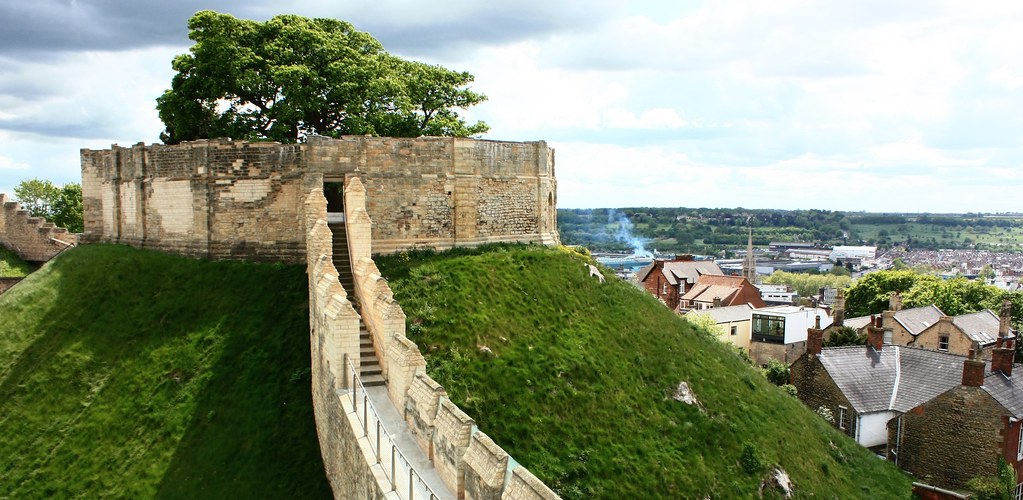
Photo by Jody Morris from flickr
Lincoln Castle was originally built in the late 11th century over the foundation of an older Roman Fortress. It started out as two separate Motte and Baileys, making it slightly more formidable than a traditional Norman fortification. Today, the original Motte and Baileys are well-preserved and surrounded by multiple additions that were constructed in the late Middle Ages. Lincoln Castle was used to help the Normans maintain control of England, but like the Tower of London, it was later converted into a prison once a castle was no longer needed within the city.
13. Erice Cathedral (Chiesa Madre) – Erice, Sicily, Italy
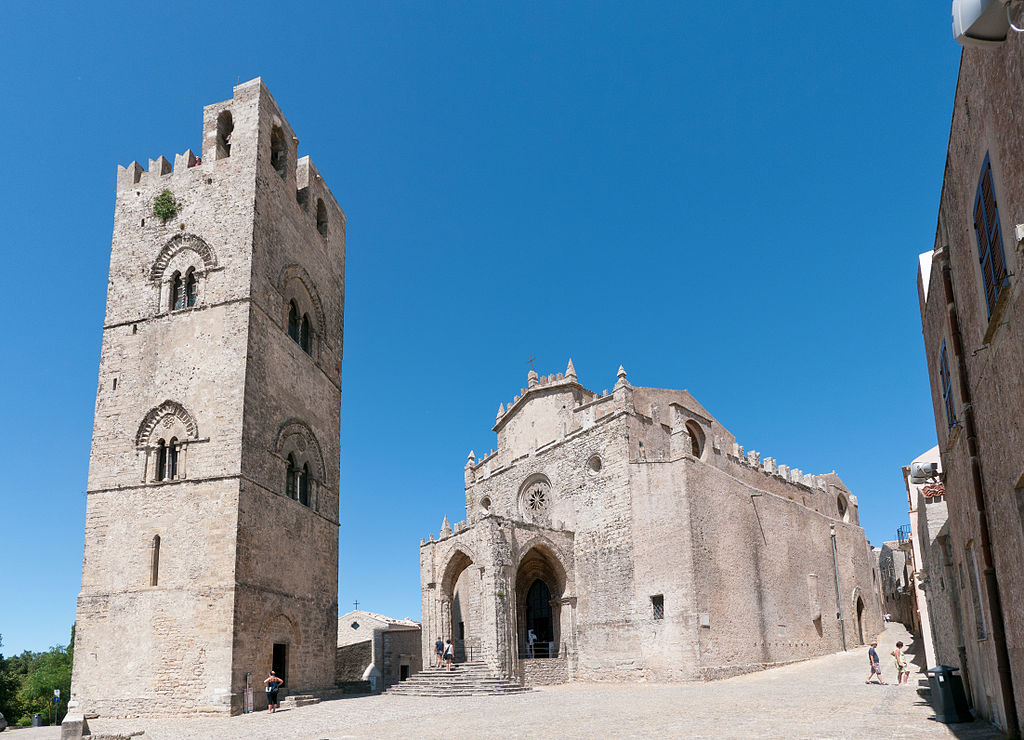
Erice Cathedral was originally built by the Normans after their conquest of Southern Italy. The bell tower is the most distinct element, and it was originally used as a fortified tower. The front facade and some of the foundations of the church also date from Norman times, but the majority of the actual church came later. Although not as impressive as some of the buildings located in Sicily, the Cathedral of Erice is still an important piece of Norman Architecture located in Italy today.
14. Palazzo Santa Sofia, Mdina, Malta

One of a handful of Norman Buildings located on the Island of Malta, Palazzo Santa Sofia shows the wealth of the Norman Nobility on the island. Believed to be the oldest building in Mdina, the Palazzo dates to the early 13th century. Only the first floor was actually built by the Normans, and the upper floors were built in the early 1900s using a form of Neo-Norman architecture meant to match the look of the existing building. Even though it was modified over time, the Palazzo Santa Sofia shows how the Normans were creating a lasting impression on the Island of Malta.
15. Durham Castle – Durham, County Durham, England
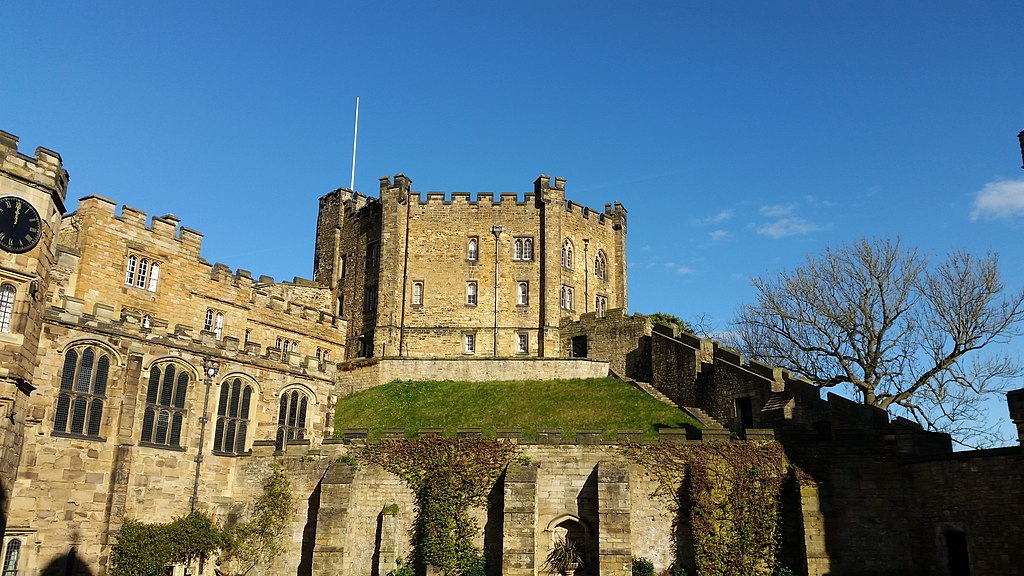
Durham Castle was another Motte and Bailey constructed by the Normans within their overall fortification network. The original building was built by William the Conqueror in 1072 CE, but this original building is barely recognizable today. Along with Durham Cathedral, the castle was an important infrastructure project that showed the newly established Norman Dynasty was here to stay. Today, Durham Castle is one of the most impressive castles in England, thanks to the numerous expansions that were added throughout history.
What happened to the Normans?
Today you won’t find a distinctly Norman nation anywhere on earth, and that is because the separate Norman Culture that existed in the early Middle Ages was blended into many of our modern nations. The Kingdom of Sicily was eventually ruled by several different factions, including the Spanish Kingdom of Aragon and the modern Kingdom of Italy, which was formed in 1861.
The Norman Dynasty in England would only last until 1135 with the death of Henry I. Although the direct line of descendants from Wiliam the Conqueror ended with Henry I, the rulers of England would maintain strong ties with the Normans through the marriage of Henry I’s daughter, Empress Matilda of England.
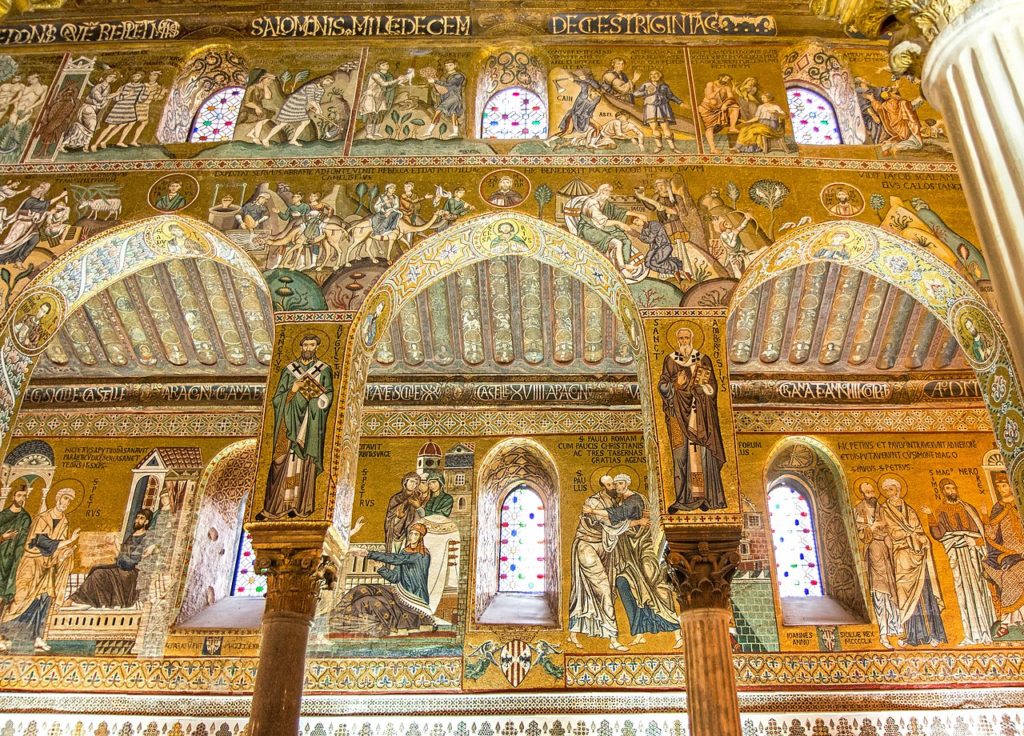
Photo by Andrea Schaffer from Wikimedia Commons
Norman Architecture Today
The Normans have left a lasting legacy on European Architecture. Unlike other medieval kingdoms, the Normans weren’t a clearly united faction with a centralized government but rather separate nations that shared a unified background. This largely explains the diversity of Norman Architecture, which is often very different in the Mediterranean vs. the British Isles. But regardless of a lack of unity, there are still many distinct features within Norman Architecture that helped shape the course of European building in the Middle Ages. Today, Norman Buildings are among the oldest and most important in the United Kingdom and Italy, and Norman Architecture remains an iconic building typology that is part of the overall Romanesque Style.

- About the Author
- Rob Carney, the founder and lead writer for Architecture of Cities has been studying the history of architecture for over 15 years.
- He is an avid traveler and photographer, and he is passionate about buildings and building history.
- Rob has a B.S. and a Master’s degree in Architecture and has worked as an architect and engineer in the Boston area for 10 years.
Like Architecture of Cities? Sign up for our mailing list to get updates on our latest articles and other information related to Architectural History.

Photo by Ethan Doyle White from Wikimedia Commons

